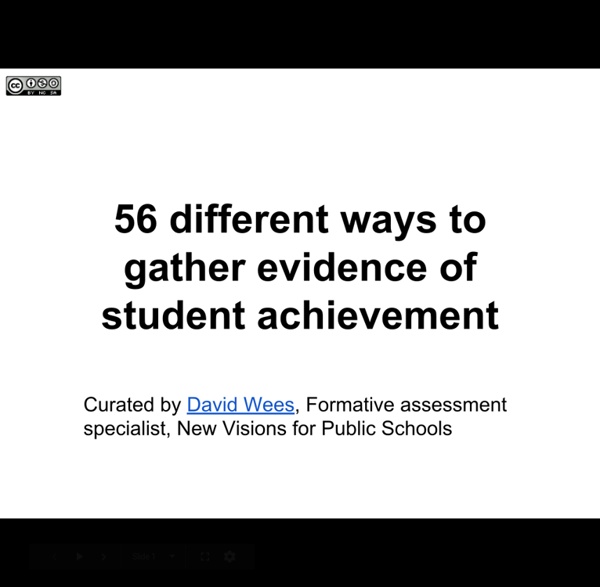Formative assessment - Google Slides

Student-centered Assessment Guide: Peer Assessment
What is peer assessment? Peer assessment is simply a matter of students giving informed feedback to one another on an assignment. Effective peer assessment is related to clear standards and is supported by a constructive process of critique. Peer assessment is a valuable tool because feedback from peers can be delivered with more immediacy and in greater volume than teacher feedback. Peer assessment should happen during the learning process, on works-in-progress, and be followed by opportunities for students to use the feedback they received to revise their work. What is not peer assessment? Peer assessment is not a process by which peers determine grades for one another. How can I use peer assessment with my students? Getting Started: Guidelines for effective peer assessment1 1. This can be done by the teacher alone, or preferably by co-constructing a checklist or rubric with students. 2. Two to four students can be grouped based on ability level. 3. 4. 5. 6. 7. 8. 9. 10. 1. 2. 3. 4.
Collaboration tools
Workshop E-twinning
Related:
Related:



